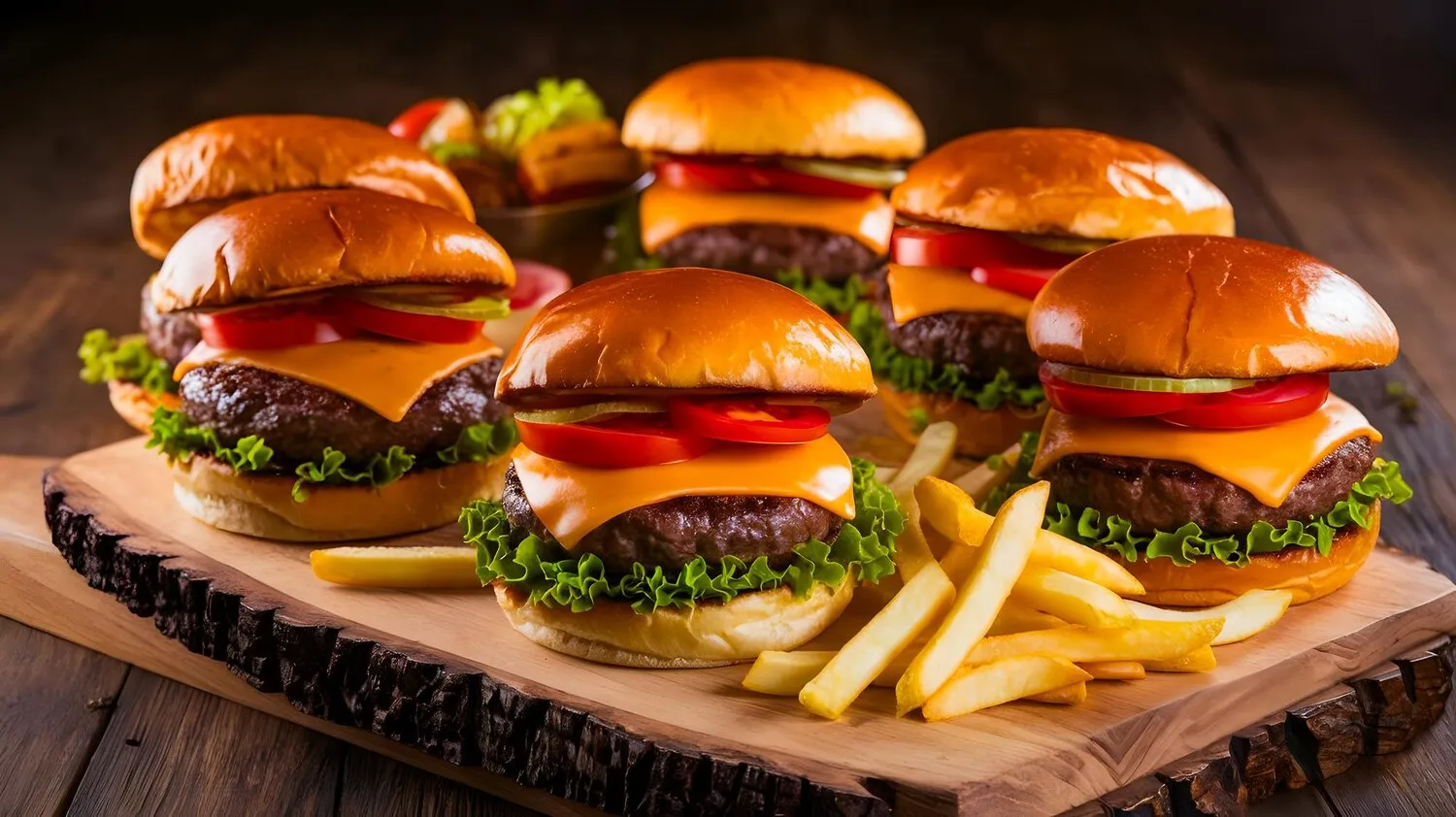
Hamburgers
Several stalls offering a variety of Hamburgers.
Nutrition Facts
* The % Daily Value (DV) tells you how much a nutrient in a serving of food contributes to a daily diet. 2,000 calories a day is used for general nutrition advice.
Moinho Food Park
While variations of ground meat patties cooked between bread existed earlier, the modern hamburger's origins are complex and debated. The late 19th and early 20th centuries saw a confluence of factors, including German immigrants introducing 'Hamburg steak,' innovations in meat grinding and fast food preparation, and entrepreneurial vendors popularizing the concept at fairs and expositions across the United States. It's not definitively attributable to one person or event.
Hamburgers are deeply ingrained in American culture, representing casual dining, fast food convenience, and backyard barbecues.
American Fast Food Icon
Hamburgers are a cornerstone of the American fast-food industry, with major chains built around their popularity. They symbolize accessibility and affordability.
Backyard Barbecues
Hamburgers are a staple of backyard barbecues and summer gatherings, representing casual socializing and family fun.
Culinary Canvas
Hamburgers serve as a versatile base for culinary experimentation, with chefs creating gourmet versions with unique ingredients and flavor combinations.
Regional Variations
Different regions of the United States have developed their own unique hamburger styles and toppings, reflecting local tastes and ingredients.
Hamburgers boast a savory and often rich flavor profile, balanced by textural contrasts and customizable toppings.
The primary flavor comes from the ground beef, typically a blend of chuck, sirloin, and/or round, offering a balance of meatiness, fat, and texture. Seasoning is crucial, often involving salt, pepper, garlic powder, and onion powder. The bun provides a soft, slightly sweet counterpoint. Toppings like cheese (cheddar, American, Swiss, etc.) add richness and creaminess. Condiments such as ketchup, mustard, mayonnaise, and relish provide acidity, sweetness, and tang. Vegetables like lettuce, tomato, onion, and pickles introduce freshness and crispness. Bacon adds a smoky, salty flavor and crispy texture.
Meat Selection Matters
Choose a ground beef blend with a good fat content (around 20-25%) for optimal flavor and juiciness. Avoid overly lean ground beef, as it can result in dry burgers.
Gentle Handling
Handle the ground beef gently when forming patties to avoid compacting the meat, which can lead to tough burgers. Lightly shape the patties and create a slight indentation in the center to prevent them from bulging during cooking.
Sear and Cook
Use high heat to sear the outside of the patty, creating a flavorful crust. Then, reduce the heat to cook the burger to your desired doneness. Use a meat thermometer to ensure accuracy.
Toast the Bun
Toasting the bun adds texture and prevents it from becoming soggy from the burger juices and condiments.
Layer Strategically
Layer toppings in a way that enhances the flavor and texture of the burger. Consider placing cheese directly on the hot patty to melt, and layering lettuce or tomato between the patty and the bottom bun to prevent sogginess.
Explore additional Fast food dishes and restaurants
Explore Fast foodDiscover top dining spots and culinary experiences in Caxias do Sul.
Explore Caxias do SulLearn more about the food culture, restaurant scene, and culinary heritage of Brazil.
Explore Brazil